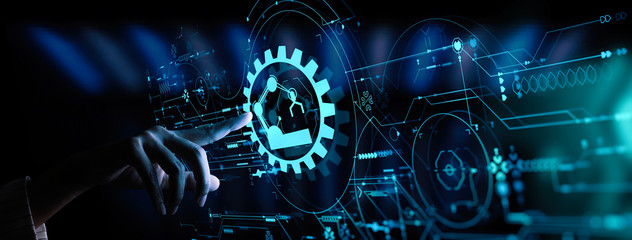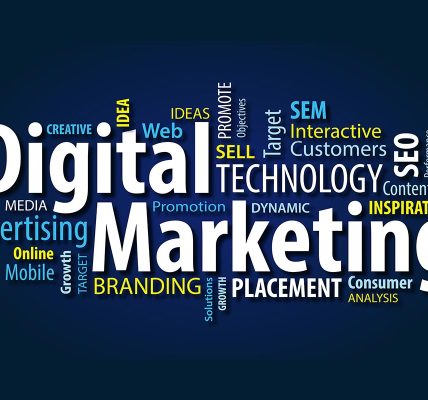Advancements in 3D Printing: Transforming Production Paradigms
Introduction
3D printing, also known as additive manufacturing, has revolutionized the way we produce objects, from small-scale prototypes to complex industrial components. With continuous advancements, 3D printing is reshaping production paradigms across various industries. This article delves into the evolution, technologies, materials, applications, and future trends of 3D printing, highlighting its transformative impact.
The Evolution of 3D Printing
Early Stages and Initial Uses
The inception of 3D printing dates back to the 1980s when it was primarily used for rapid prototyping. The initial focus was on creating models and prototypes quickly and accurately, which was a significant leap from traditional manufacturing methods.
Significant Milestones in 3D Printing History
Over the decades, 3D printing has seen remarkable milestones. In 1986, Charles Hull patented stereolithography (SLA), one of the earliest 3D printing technologies. The 2000s saw the advent of more accessible and affordable 3D printers, bringing the technology to a broader audience.
Types of 3D Printing Technologies
Fused Deposition Modeling (FDM)
FDM is the most common type of 3D printing, where a filament of thermoplastic is melted and extruded layer by layer to form an object. It’s widely used due to its simplicity and affordability.
Stereolithography (SLA)
SLA uses a laser to cure liquid resin into hardened plastic in a layer-by-layer process. It’s known for its high precision and smooth finish, making it ideal for detailed prototypes.
Selective Laser Sintering (SLS)
SLS involves a laser that sinters powdered material, typically plastic, metal, or ceramic, to form solid structures. This method is favored for its ability to create strong, durable parts without the need for support structures.
Digital Light Processing (DLP)
DLP is similar to SLA but uses a digital projector screen to flash an image of a layer across the entire surface of the resin, curing it simultaneously. This makes DLP faster and capable of producing high-resolution prints.
Multi Jet Fusion (MJF)
MJF uses a sweeping arm to deposit a layer of powder, followed by another arm that sprays a fusing agent on top. This method allows for rapid production and high detail, suitable for industrial use.
Materials Used in 3D Printing
Plastics
Plastics, such as PLA and ABS, are the most commonly used materials in 3D printing due to their versatility, ease of use, and affordability.
Metals
Metals like titanium, aluminum, and stainless steel are used in industries requiring high-strength components, such as aerospace and automotive.
Ceramics
Ceramics are used for applications requiring high heat resistance and durability, including medical implants and electronic components.
Biodegradable Materials
Eco-friendly and sustainable, biodegradable materials are gaining traction for their minimal environmental impact, often used in consumer goods and packaging.
Composite Materials
Composites combine two or more materials to enhance properties like strength, flexibility, or heat resistance, expanding the range of applications for 3D printing.
Applications in Various Industries
Healthcare and Medical Devices
3D printing is transforming healthcare by enabling the production of customized prosthetics, implants, and even bioprinted tissues.
Aerospace and Aviation
The aerospace industry benefits from lightweight, strong components that can be rapidly prototyped and tested, reducing production costs and times.
Automotive Industry
Automakers use 3D printing for custom parts, rapid prototyping, and small-scale production, enhancing design flexibility and manufacturing efficiency.
Construction and Architecture
From 3D printed homes to intricate architectural designs, the construction industry is leveraging 3D printing for sustainable and innovative building practices.
Consumer Goods
3D printing allows for personalized products in fashion, jewelry, home decor, and everyday items, catering to consumer preferences for unique and custom designs.
Healthcare Revolution with 3D Printing
Prosthetics and Implants
Custom-fitted prosthetics and implants created with 3D printing provide enhanced comfort and functionality for patients, revolutionizing medical care.
Customized Medical Devices
Medical devices tailored to individual patients’ needs improve treatment outcomes and patient satisfaction, a direct result of the flexibility of 3D printing.
Bioprinting Tissues and Organs
Although still in experimental stages, bioprinting holds the promise of creating lab-grown tissues and organs, potentially solving organ transplant shortages.
Impact on Aerospace and Aviation
Lightweight Components
3D printing enables the creation of lightweight yet strong components, crucial for the efficiency and performance of aircraft.
Rapid Prototyping and Testing
The ability to quickly produce and test prototypes accelerates the development process, reducing time to market for new aerospace innovations.
Cost Efficiency in Manufacturing
By reducing material waste and production steps, 3D printing offers significant cost savings in aerospace manufacturing.
Automotive Innovations
Custom Parts and Accessories
3D printing allows for the creation of custom car parts and accessories, tailored to specific vehicles and customer preferences.
Prototyping and Design Flexibility
Automotive designers can rapidly iterate on prototypes, testing new designs and functionalities more efficiently than traditional methods.
Mass Production Benefits
For small-scale production runs, 3D printing offers a cost-effective solution, reducing the need for expensive tooling and molds.
Transforming Construction and Architecture
3D Printed Homes and Buildings
Entire homes and buildings can be 3D printed, offering solutions for affordable housing and rapid construction in disaster-stricken areas.
Sustainable Construction Practices
3D printing in construction reduces waste and allows for the use of sustainable materials, promoting eco-friendly building practices.
Custom Architectural Designs
Architects can realize complex and custom designs that would be difficult or impossible with traditional construction methods.
Consumer Goods and Customization
Personalized Products
From bespoke jewelry to custom-fit apparel, 3D printing meets the growing demand for personalized consumer products.
Fashion and Jewelry
Designers are using 3D printing to create intricate and unique fashion and jewelry pieces that stand out in the market.
Home Decor and Everyday Items
Home decor items and everyday objects can be customized to fit personal tastes, offering consumers unique and tailored products.
Economic and Environmental Impacts
Cost Savings and Efficiency
3D printing reduces the cost of production by minimizing material waste and eliminating the need for expensive tooling.
Reduction of Waste
The additive process of 3D printing ensures that only the necessary material is used, significantly cutting down on waste.
Sustainable Manufacturing Practices
The use of biodegradable and recycled materials in 3D printing supports sustainable manufacturing practices and reduces environmental impact.
Challenges and Limitations
Technical and Material Limitations
Despite its advancements, 3D printing still faces challenges related to material properties and technical capabilities, limiting its application in some areas.
Regulatory and Safety Concerns
The regulatory landscape for 3D printed products is still evolving, with safety and quality standards needing to be addressed comprehensively.
High Initial Investment Costs
The initial investment for high-end 3D printing equipment can be substantial, posing a barrier for smaller businesses.
Future Trends in 3D Printing
Integration with AI and IoT
Combining 3D printing with artificial intelligence (AI) and the Internet of Things (IoT) can lead to smarter and more efficient production systems.
Advances in Bioprinting
Continued advancements in bioprinting could eventually lead to the routine printing of functional tissues and organs for medical use.
Expansion into New Materials and Applications
Ongoing research is expanding the range of materials that can be used in 3D printing, opening up new possibilities in various fields.
Case Studies of Successful Implementations
Notable Companies and Projects
Companies like GE, Boeing, and Stratasys are leading the way in 3D printing innovation, showcasing successful applications and driving industry standards.
Real-World Examples of 3D Printing Success
From medical breakthroughs to aerospace advancements, real-world examples highlight the transformative power of 3D printing.
Conclusion
The advancements in 3D printing are undeniably transforming production paradigms across multiple industries. From healthcare and aerospace to consumer goods and construction, the impact is profound and far-reaching. As technology continues to evolve, the future of 3D printing holds exciting possibilities, promising even greater innovations and efficiencies.
FAQs
1. What are the main types of 3D printing technologies?
The main types include Fused Deposition Modeling (FDM), Stereolithography (SLA), Selective Laser Sintering (SLS), Digital Light Processing (DLP), and Multi Jet Fusion (MJF).
2. How is 3D printing used in the healthcare industry?
3D printing is used to create customized prosthetics, implants, medical devices, and is also being explored for bioprinting tissues and organs.
3. What materials can be used in 3D printing?
Materials include plastics, metals, ceramics, biodegradable materials, and composite materials, each suited for different applications.
4. What are the environmental benefits of 3D printing?
3D printing reduces waste through its additive process, allows for the use of sustainable materials, and promotes efficient production methods.
5. What are some challenges facing 3D printing technology?
Challenges include technical and material limitations, regulatory and safety concerns, and the high initial investment costs for advanced 3D printing equipment.





